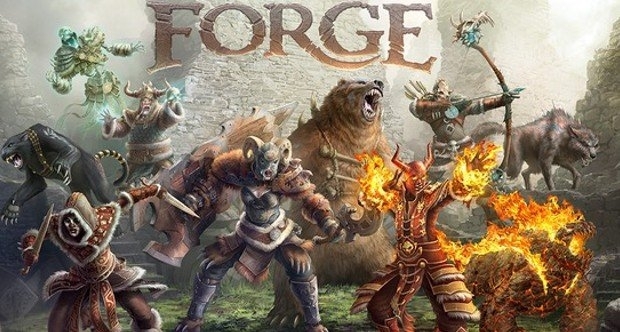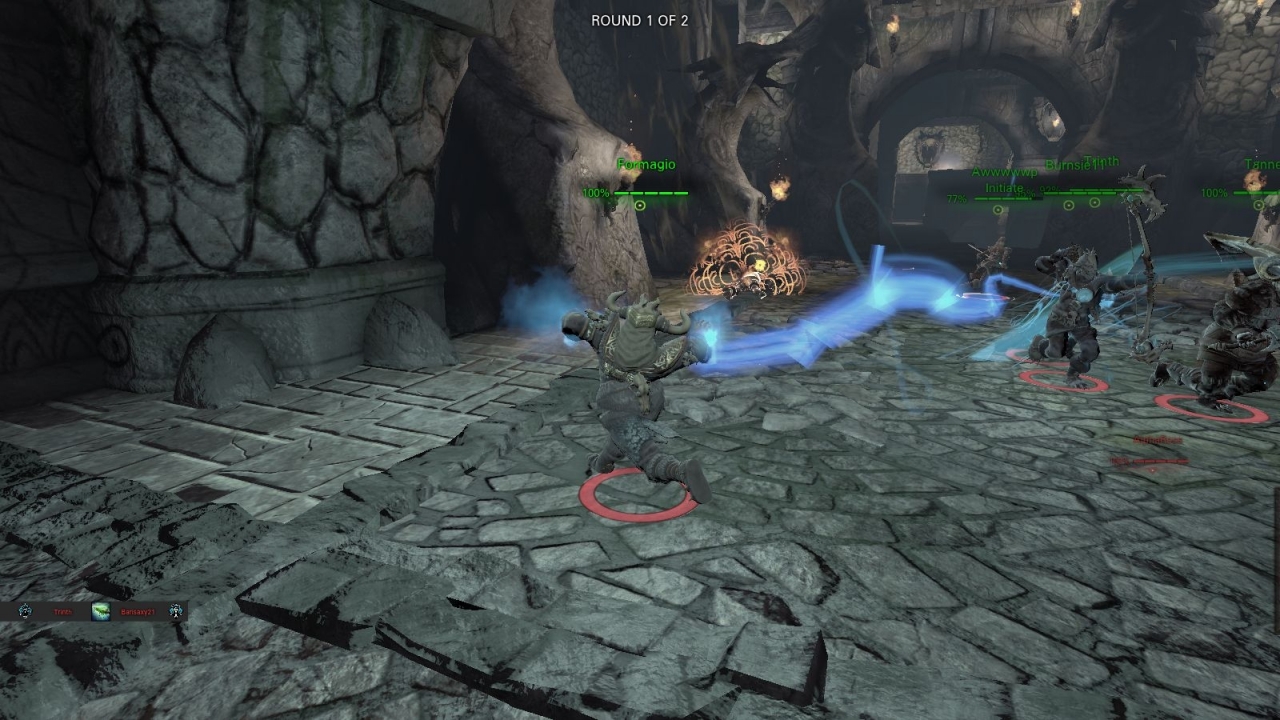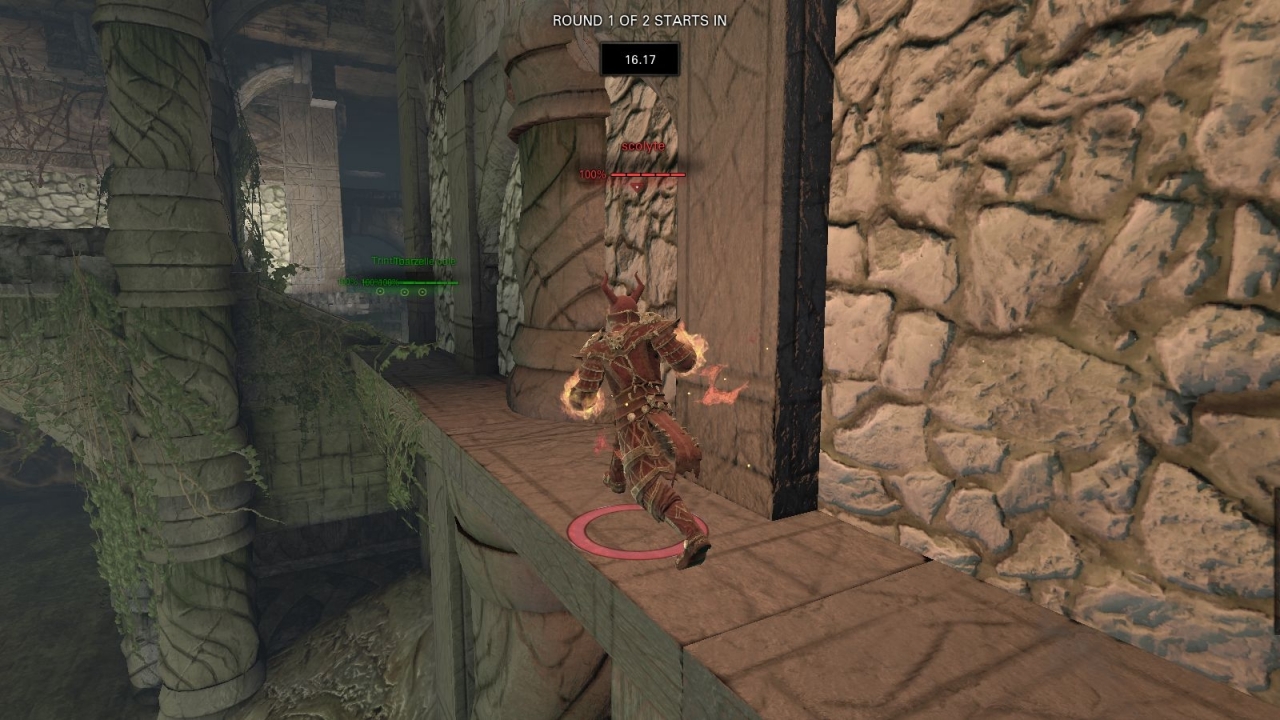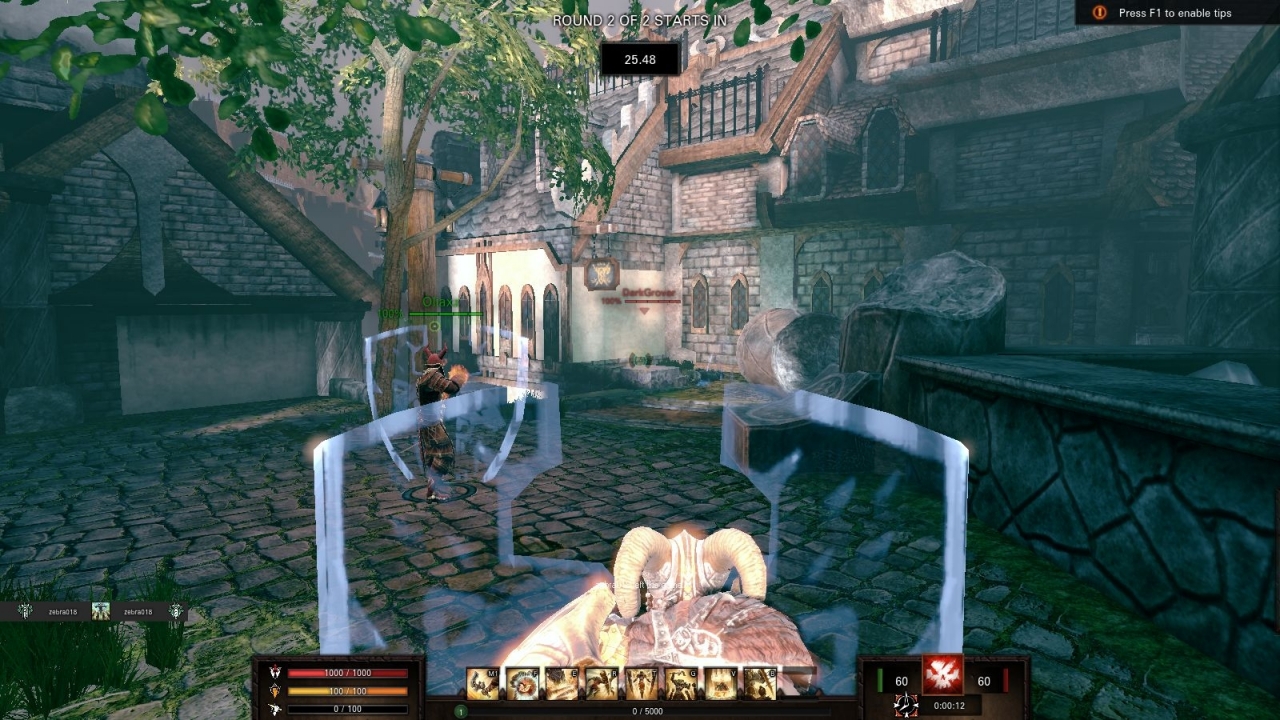Forge Review: It Promises Pure Fun and Delivers
Our review of the now launched PvP focused slugfest.

Forge's goal was simple – bringing the experience of MMORPG PvP to its own game, without the grind or the open world or the leveling up or raids, or any of that. Having spent quite a few hours in it, I can safely say they have definitely done something like that. It's not exactly MMORPG PvP, and it's not exactly a third-person shooter but, instead, comes together like an oddly fascinating, confusing, but very good hybrid.
They have taken out the click-and-auto-attack roots of the likes of World of Warcraft and replaced them with more action-game grounding, wisely adding an aiming reticle. With this, your basic and hot button attacks must be targeting (and hitting) someone for them to land. With the archer character, the Pathfinder, for example, I had to carefully manage my aim and be sure to calculate the correct direction and trajectory to land my root attack. This makes Forge much more of an action-oriented game, which (given the developer's talk of customization) is a smart choice, as there is no experience or advancement in-game.
There are five classes so far, including the archery-focused Pathfinder, the Pyromancer, the sword-and-shield tank Warden (who is a woman, which I think is very cool), the support-healer Shaman and the Assassin. To the game's credit, all the classes function very well, but – and this might just be MOBA exposure – I felt very lost jumping into the game my first time. In addition to new-game confusion, Forge does not tell you much about itself.

Right from the get-go, I had a new class and nine abilities to choose from, and while I flailed about desperately trying to figure out what I was doing, I got slaughtered by other players. Perhaps I've been out of the loop too long, but the main advantage of PvP in World of Warcraft was building up my character and giving me each ability one by one, and letting me use it on neutral monsters before I even looked at the PvP option. The breif tutorial does give you a stronger sense of what to do and how to play, but the modes are all difficult to understand without trial-by-fire, so be prepared to not win your first games. Worse yet, against skilled players or with bad teammates, you'll get turned to ashes by Pyromancers from across the map and have no idea how to counter them. It's frustrating for new players, but given time, it gets easier.
While the audio isn't very grabbing - very muted "ooohhhmm"s for the ambient track and unimpressive 'smacks' for the combat - the environments and character models look brilliant; from a dusk-themed city market to the catacombs of Ymil's Throne, the game is visually great. The Pyromancer's armor, adorned with skulls and red scale armor and a horned helmet, looks beautiful, and his abilities flash and look great. We can thank the Unreal engine for that, as it looks like a big-name game, not an indie title from a young studio. It's visually very impressive.
The way the game presents team fights took some getting used to – with the game not providing much information – but every class started to get its role a little more cemented and it started to make more sense. As the Warden, I was the best at breaking lines and charging in to beat someone over the head with a stun. Alone, it did little, but with a Pyro and Pathfinder, I could lock down priority targets like the fragile Pyros to get melted. It took a few times to get a team that's coordinated and skilled. And I even blame myself in that one, mostly for the times I ran around alone swinging a giant axe as the Warden, as if to say, “I'm helping!”
When I played the game in beta, it was pretty confusing, but things have been greatly streamlined. The UI is cleaner and more responsive, the hitboxes are better, there's a better conveyance of objectives and missions, and it just feels more cohesive and tighter. They even removed that frustrating problem with the Warden where hitting her Charge consumes the ability even if you aren't targeting them and she doesn't launch. It's still confusing, but that's not even really a problem of the game, just of how multiplayer third-person games go. Unless you're holding an assault rifle, you're going to be a bit disoriented.

In the final release, with the Warden, I could charge down a Pyromancer and stun him/her, blockade enclosed tunnels to prevent reinforcements arriving, and hurricane spin on Assassins who thought he/she could kill me. If I went defensive, I couldn't be stopped, but I was also able to be kited. She felt powerful; like I could do all the things you want heavily armored axe-wielding brawlers to do, without the punishing difficulty I had encountered before.
Plus, there's a wide canvas of customization as you progress through the game, adding incentive to keep playing and furthering your build. Deadlines prevented me from going back over and digging through it, but there's a lot of options for my go-to lady tank, increasing damage resistances for hardiness or rushing offensive power to make my spin attack even more destructive.

Forge is really excellent when you get the hang of it. It's come at a time when there's nothing quite like it on the market, and with all the capacity for more content and customization, it could be like League of Legends – a sleeper hit that makes a splash and only gets bigger. If Forge receives critical acclaim and begins a new line of eSports, do not be surprised. This is one to watch.